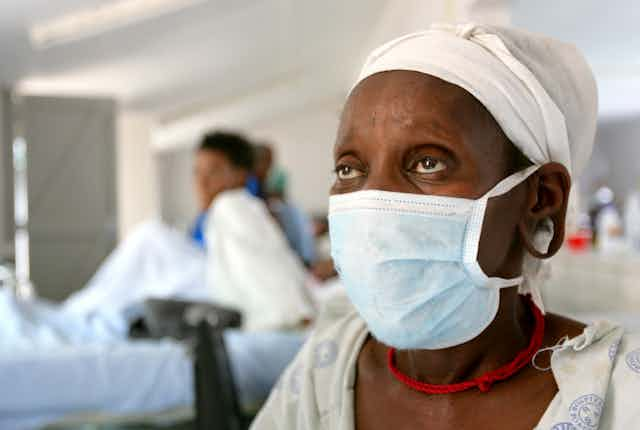A significant amount of tuberculosis research in recent years has been focused on combating the bacterial lung disease by treating it with drugs that are used to treat other diseases and conditions. There is still no cure and more drugs are urgently needed to meet the acute demand of the disease.
The problem has been exacerbated by the discovery of drug-resistant tuberculosis in 2006. It is now an escalating global threat. Each year more than 9 million people are infected with TB and another 1.5 million die. At least 4% of people diagnosed for the first time and up to 20% of those treated for the disease have “multiple-drug-resistant TB”. About 9.7% of these also have “extensively-drug-resistant TB”.
Most TB treatments target bacteria that actively grow in the body. Four major classes of strong antibiotics are used: isoniazid, rifampin, fluoroquinolones, and aminoglycosides. But for patients who do not respond to these key treatments the outlook is grim.
New drugs are being developed but they need to go through rigorous and lengthy safety, efficacy and compatibility tests. This affects how fast they come onto the market.
Re-purposing antibiotics or combining commercially available products which are not earmarked for TB with the current and new anti-TB regimens could, however, solve this problem.
Our study found that if re-purposed antibiotics were administered in the first 14 days of treatment they had the same effect as both established TB drugs and new drugs. Our study focused on the first 14 days of treatment because in that period it is still safe to give only one drug and to be able to measure its effect.
If these re-purposed antibiotics prove effective beyond the first two weeks, they could be added to the much needed arsenal of drugs to fight the deadly disease.
Understanding antibiotics
Various classes of antibiotics have a spectrum of micro-organisms that they can kill.
In the last two decades of TB research, researchers have investigated the viability of various antibiotics which were not originally meant to treat TB. Fluoroquinolones are a good example. They are a class of antibiotics that are administered to treat urinary tract infections. Studies have shown that some fluoroquinolones work well for TB if they are taken over several months.
But some antiobiotics, such as those derived from pencillin such as beta-lactams, have been shown to be ineffective. Two clinical trials have been done – one in 1997 and 2001 – with a commonly used antibiotic called amoxcillin/clavulanic acid and also known as amoxiclav or augmentine. One took place in the US and Turkey and the other in South Africa. Both found that the bacteria that causes TB overpowered the beta-lactams.
But we retested more beta-lactams in the laboratory. Our results show that more modern beta-lactams could perhaps overcome the TB bacteria’s defences.
The tests
Our laboratory does clinical trials to find better TB treatments. For this particular study we wanted to establish whether a new beta-lactam, which is commercially available and safe, could be used for TB treatment.
We randomly allocated two groups of 15 patients who had TB with either a combination of re-purposed antibiotics or existing TB treatments. We limited the trial to 14 days. We tested three beta-lactams: one, meropenem, we administered intravenously, and two we administered orally, amoxicillin–clavulanic acid and faropenem. The sputum samples of patients was analysed.
We found that when combined two specific beta-lactams – meropenem and amoxicillin–clavulanic acid – were able to break through the bacteria’s defence. As a combination, meropenem, which is commonly used for severe infections, combined with amoxicillin/clavulanic acid was as active over the first 14 days of treatment as the established drugs (rifampicin and pyrazinamide) and the novel drugs (bedaquiline and delamanid).
Intravenous meropenem treatment was as active as the most successful drugs on the market for TB treatment. The more practical oral treatment (faropenem) was not active because not enough of the drug was taken up into the body. But both treatments were well tolerated.
Next steps
Our study only looked at the effectiveness of the two drugs in the first two weeks of treatment.
The effectiveness of the antibiotics do not guarantee a relapse-free cure for TB. Longer trials are now needed to determine how beta-lactams can contribute to the treatment of TB.
But based on these results, an intensive search for an orally active beta-lactam for TB treatment has begun. The next oral beta-lactam test will be done in 2017 and the results should be available towards the end of that year. Once a drug has been found that can be taken orally and has the same effect as the treatment given intravenously larger studies in combination with other drugs will follow. It might nevertheless be several years before beta-lactams become part of standard treatment.

